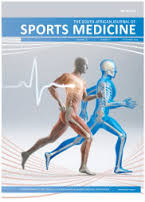Why are there no platypuses at the Olympics?: A teleological case for athletes with disorders of sexual development to compete within their sex category
DOI:
https://doi.org/10.17159/2078-516X/2020/v32i1a7918Abstract
In mid-2019, the controversy regarding South African runner Caster Semenya’s eligibility to participate in competitions against other female runners culminated in a Court of Arbitration for Sport judgement. Semenya possessed high endogenous testosterone levels (arguably a performance advantage), secondary to a disorder of sexual development. In this commentary, Aristotelean teleology is used to defend the existence of ‘male’ and ‘female’ as discrete categories. It is argued that once the athlete’s sex is established, they should be allowed to compete in the category of their sex without obligatory medical treatment. Indeed, other athletes who possess advantageous genetic or phenotypic traits that fall outside of the human norm have been allowed to compete as humans without restraint. In both cases, if an athlete possesses the essential attributes of being a human or being male or female they should be permitted to compete in those respective categories; athletes’ eligibilities should not be based upon accidental attributes.
Downloads
Downloads
Published
Issue
Section
License
The South African Journal of Sports Medicine reserves copyright of the material published. The work is licensed under a Creative Commons Attribution 4.0 (CC BY 4.0) International License. Material submitted for publication in the South African Journal of Sports Medicine is accepted provided it has not been published elsewhere. The South African Journal of Sports Medicine does not hold itself responsible for statements made by the authors.
How to Cite
- Abstract 859
- PDF 516





.png)